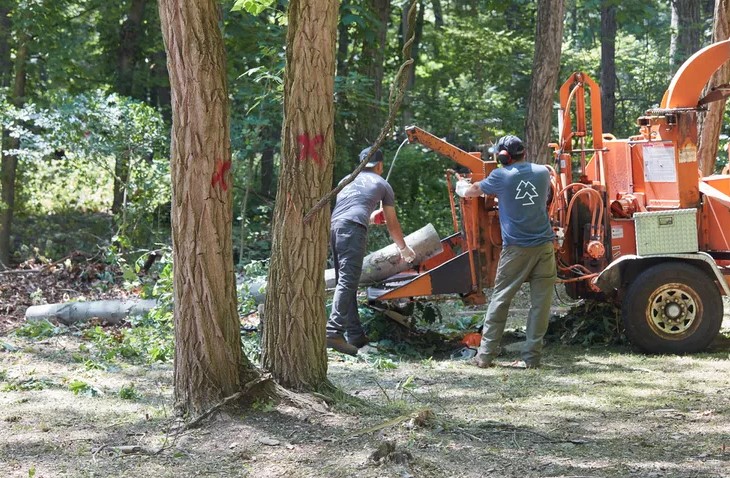Trees bring character and charm to any property, offering shade, privacy, and even increasing its value. But despite their many benefits, there are times when a tree becomes more of a liability than an asset. Knowing when a tree needs to be removed is not always as simple as many may think, problems can develop gradually, making them easy to overlook. For homeowners looking into professional tree removal, choosing a team that knows what they are doing can help.
Spotting the Warning Signs of an Unhealthy Tree
Trees can suffer from various diseases, pest infestations, and environmental stress that weaken their structure over time. Signs of trouble often show up in the form of discoloured or sparse foliage, dead limbs, or fungus growing around the base.
Some tree ailments can be treated if caught early, but in many cases, the damage is irreversible, leaving removal as the safest option. The tree’s overall structure is just as important, so if the trunk has deep cracks, large sections of bark are missing, or the tree is hollow inside, it may no longer be stable.
The Effects of Storm Damage and Harsh Environmental Conditions
Severe weather can turn even a healthy tree into a safety hazard. Heavy rain and strong winds weaken root systems, while lightning strikes can leave trees structurally compromised. Some trees recover with time and care, but when major branches snap or roots shift significantly, the risk of collapse increases. Environmental stress also plays a role in a tree’s decline.
Long periods of drought, poor soil conditions, or damage from nearby construction can take a toll, making a tree more vulnerable to disease and pests. If a tree is not recovering despite favourable conditions, it may be time to consider removal.
When Trees Get Too Close for Comfort
A well-placed tree adds beauty to a home, but when it grows too close to buildings, fences, or power lines, problems arise. Expanding root systems can disrupt foundations, lift sidewalks, or even invade underground plumbing.
Overgrown branches rubbing against a house can cause structural damage, while those hanging too close to power lines present a serious fire risk. In some cases, strategic pruning can help, but if a tree’s location is causing ongoing damage, removal is often the most practical long-term solution.
Knowing the Risks and Legal Responsibilities
A tree that is at risk of falling is not just a personal concern but can become a legal issue if it threatens neighbouring properties, sidewalks, or roads. Weak branches or an unstable trunk could cause injuries or property damage, leaving the homeowner liable.
Local regulations may also require property owners to address hazardous trees before they cause problems. Getting advice from professionals can help clarify whether a tree must be removed to comply with safety regulations and prevent potential legal disputes.
What Comes After Tree Removal?
Once a tree is removed, the next step is deciding what to do with the space left behind. Some homeowners choose to plant a new tree, selecting a species better suited to the environment and available space. Others use the opportunity to redesign their landscape, adding new plants or features that complement the area.
Whatever the plan, proper maintenance is key to preventing future issues. Regular inspections, pruning, and soil care help keep remaining trees healthy and thriving for years to come.
Making the Right Decision Before It’s Too Late
Knowing when to remove a tree can make all the difference in protecting a property’s safety and aesthetics. Trees suffering from disease, structural weaknesses, or storm damage should be carefully assessed before they become a hazard.
When a tree starts growing too close to a home or power lines, early action can prevent costly damage down the line. Consulting professionals in tree removal can provide clarity, ensuring homeowners make informed decisions that balance safety, practicality, and the overall health of their landscape.

Recent Comments